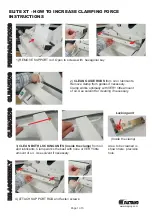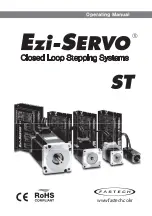
* The blind hem foot is an optional accessory not supplied with
your machine.
For hems, curtains, trousers, skirts, etc.
Blind hem for stretch fabrics.
Blind hem/ lingerie for firm fabrics.
Set the machine as illustrated.
It takes practice to sew blind hems. Always make a sewing
test first.
Fold the fabric as illustrated with the wrong side uppermost. (1)
Place the fabric under the foot. Turn the handwheel forwards by
hand until the needle swings fully to the left. It should just pierce
the fold of the fabric. If it does not, adjust the stitch width
accordingly. (2)
Adjust the guide (3) by turning the knob (4) so that the guide
just rests against the fold.
Sew slowly, by pressing the foot control lightly guiding the fabric
along the edge of the guide.
Note:
21
Blind hem/ lingerie stitch (optional)
Stitch width dial
Stitch length dial
1
3
4
2
















































